Traditionalist Issues
 |
 |
 |
 |
 |
 |
 |
Dialogue Mass - CXLIX
Modernism at the Root of Today’s
Theological Confusion
There can be no doubt that the part played by the demise of the science of metaphysics and the Scholastic tradition – once a staple of pre-Vatican II seminaries – was a decisive factor in enabling the widespread confusion we are witnessing about objective reality and subjective impressions, truth and error in doctrine, good and evil in morality, and clerical and lay identities.
The ability to make these distinctions was part of a wider system of intellectual formation for young clerics training to be priests, enabling them to distinguish between the objective realities of the Catholic Faith and mere subjective opinions, in other words between true and false philosophies of religion. What Pope Pius X said of the modernists of his day is equally true of their heirs the progressivists:
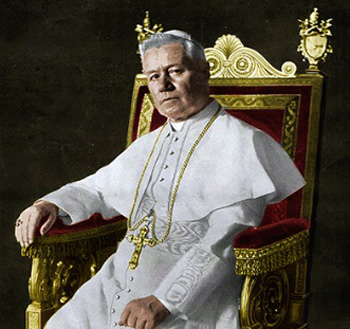 “Their whole system, with all its errors, has been born of the alliance between faith and false philosophy”. (Pascendi § 41)
“Their whole system, with all its errors, has been born of the alliance between faith and false philosophy”. (Pascendi § 41)
As a good pastor of souls, St. Pius X was offering advice on how to avoid dead ends in philosophy and theology and not to get stuck in a blind alley of subjectivism. Its relevance for today has become more acute: since Vatican II, theologians have been going down the wrong road for so long that they cannot easily find their way back to Catholicism pure and simple.
Many who have been deprived of the benefit of the Scholastic method lack the tried and tested means with which to make proper distinctions between what is true and false in religion. As a result, they have become increasingly prey to “Ecumenism” and religious pluralism as promoted by Vatican II and the Conciliar Popes. Worse still, some are not even aware of the general state of confusion that exists today in matters of Faith, and are unable to discern, let alone refute, the false reasoning and sophistic arguments of the “New Evangelization.”
Scholasticism replaced by inner emotions
Our forays into the thinking of Fr. George Tyrrell and the early 20th-century Modernist Movement have proved useful in unearthing the roots of Vatican II’s revolutionary ideas which have been imposed on the Church of our day. For Tyrrell, Revelation arises from internal feelings; it is “a direct experience given to the soul by God” which “cannot be caused by external instruction.”1 He did not believe that Faith required the conformity of the intellect to revealed truth:
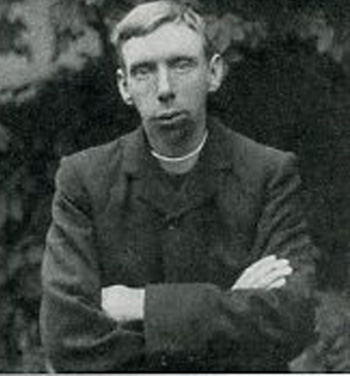 “It is primarily a Way or manner of life that has been committed to her guardianship, rather than a body of doctrine. The Faith which she holds as a deposit is not an intellectual or theological system, offered for mental assent. … If it is a truth, it is not a truth of the intellect, but a truth or trueness of the will to God.”2
“It is primarily a Way or manner of life that has been committed to her guardianship, rather than a body of doctrine. The Faith which she holds as a deposit is not an intellectual or theological system, offered for mental assent. … If it is a truth, it is not a truth of the intellect, but a truth or trueness of the will to God.”2
This was his reason for rejecting the teaching authority of the Ecclesia Docens as well as Tradition as a Deposit of Faith handed on intact from one generation to the next. According to this model, people must look to “the God within” for the source of truth.
In brief, he did not believe that Revelation is communicable through propositions and dogmatic formulae – hence his decision to dispense with Scholasticism. He criticized “the inadequacy of Scholastic Philosophy as a vehicle of Christian thought,”3 first because it appeared to him as “a method so strange to modern intellectual instincts,”4 and secondly because he considered it was a dead science, divorced from the exigencies of real-life situations faced by people in the modern world.
He explained: “Doctrines were brought to the criterion of syllogistic reason, of written authority, but not to the criterion of life as lived by the faithful.”5
It is a basic tenet of the original modernists and their present-day heirs – the progressivists – that human experience and the inner promptings of the mind are the only valid criteria of truth. That is why there is now such heavy emphasis on the idea of a “Living Theology” to suit the exigencies of our day. The aim was to replace the authority of “external” Revelation expressed through dogmatic principles, made binding on each individual, with the subjective evaluation of the individual whose private judgement reigns supreme. It is commonly accepted among Catholics today that the source of Truth is not found “out there” – in what God has revealed – but rather “in here” – in the mind of each believer.
The infallible Magisterium of the Ecclesia Docens, linked as it is to Divine Revelation, has thus come to be considered not only an irrelevance in the life of the Church, but a stumbling block to Christian unity and an obstacle to freedom and progress in modern society.
Francis followed Tyrrell in destroying Scholasticism
While the neo-modernist theologians at Vatican II were far too astute to present their version of Revelation in terms borrowed openly from Fr. Tyrrell, preferring to cloak the similarities between them in verbal obfuscations, Francis threw all caution to the wind, and spoke like a true son of his Jesuit mentor. In contrast to the progressivists at Vatican II, he could afford to adopt a more open stance now that the victory of Modernism in the Church has been well and truly established.
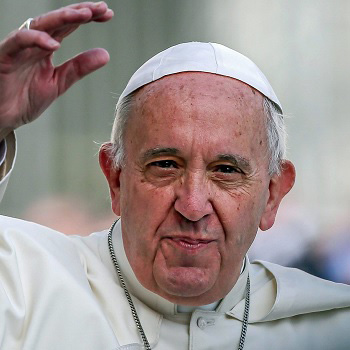 One notorious example in which Francis applied what Tyrrell called “the criterion of life as lived by the faithful” was when, in Amoris laetitia (2016), he recommended that remarried divorcees without a commitment to continence can receive Holy Communion, at least in some cases. This clearly demonstrates his opposition to the Church’s legislation – itself derived from the Divine Law – which imposes an obligation on priests to exclude such people from Holy Communion, with no exceptions. In so doing, he contradicted the teaching and discipline of all his Predecessors.
One notorious example in which Francis applied what Tyrrell called “the criterion of life as lived by the faithful” was when, in Amoris laetitia (2016), he recommended that remarried divorcees without a commitment to continence can receive Holy Communion, at least in some cases. This clearly demonstrates his opposition to the Church’s legislation – itself derived from the Divine Law – which imposes an obligation on priests to exclude such people from Holy Communion, with no exceptions. In so doing, he contradicted the teaching and discipline of all his Predecessors.
The evidence is also incontrovertible that, in this instance, Francis has introduced a major revolutionary change into the Church’s unchanging and unchangeable moral teaching about a practice which Our Lord termed adultery. (Lk 16:18) No amount of the “medicine of mercy” can sanitize the Pope’s action as anything other than an outright attack against both Scripture and Tradition, the two indispensable pillars on which the legitimacy of the Papacy rests.
It was a triumph – hardly a laudable one – for the neo-modernists which could not have come about without the razing of the bastion of the great Scholastic tradition. But let us not forget that it was Tyrrell who, in the first place, had helped to destroy the theological and philosophical method of intellectual reasoning that had underpinned centuries of magisterial teaching, and had enabled theologians to arrive at a proper understanding of Catholic Truth.
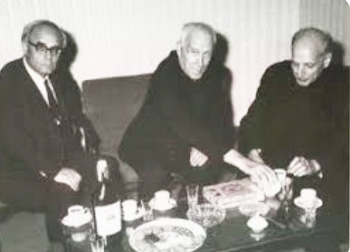 Historical evidence shows that Scholasticism – which was mortally wounded by Tyrrell and his associates – was completely killed off by his heirs – Jesuits de Lubac, von Balthasar and Rahner, Dominicans Chenu, Congar and Schillebeeckx, and Ratzinger, to name the most egregious promoters of the “New Theology.” And to this list we must, of course, add the name of Pope Francis who delivered his own unmerciful coup de grâce.
Historical evidence shows that Scholasticism – which was mortally wounded by Tyrrell and his associates – was completely killed off by his heirs – Jesuits de Lubac, von Balthasar and Rahner, Dominicans Chenu, Congar and Schillebeeckx, and Ratzinger, to name the most egregious promoters of the “New Theology.” And to this list we must, of course, add the name of Pope Francis who delivered his own unmerciful coup de grâce.
We have the “triumphalist” testimony of Fr. Congar that Vatican II had broken the hegemony of the Scholastic system over the Church’s methods of catechesis. He stated:
“The Council destroyed what I would call the unconditionality of the system. What I understand by ‘system’ is a complete and very coherent body of ideas transmitted by the teachings of Roman Universities, codified by Canon Law, protected by the strict and quite efficient vigilance of Pius XII, with reports, admonitions, the submission of writings to Roman censors etc. – in short, a whole ‘system.’ With the Council, this was broken up. Tongues were loosened. The subterraneous elements surfaced.”6
We must not lose sight of the logical consequence of replacing Scholasticism with modern secular philosophies in the area of Catholic Morals. The Hierarchy no longer has the wherewithal effectively to combat the tide of moral depravity that has flooded the Church since Vatican II, whether in the domain of clergy child abuse, marital ethics or any other area of sexual morality. In compromising with the spirit of the world over the issue of adultery, Francis has given the impression that he considers himself not bound by either Divine Law or Natural Law, and that the Church does not really take infringements of the Sixth Commandment seriously.
Continued

The ability to make these distinctions was part of a wider system of intellectual formation for young clerics training to be priests, enabling them to distinguish between the objective realities of the Catholic Faith and mere subjective opinions, in other words between true and false philosophies of religion. What Pope Pius X said of the modernists of his day is equally true of their heirs the progressivists:

Pope St. Pius X wrote Pascendi against Modernism
As a good pastor of souls, St. Pius X was offering advice on how to avoid dead ends in philosophy and theology and not to get stuck in a blind alley of subjectivism. Its relevance for today has become more acute: since Vatican II, theologians have been going down the wrong road for so long that they cannot easily find their way back to Catholicism pure and simple.
Many who have been deprived of the benefit of the Scholastic method lack the tried and tested means with which to make proper distinctions between what is true and false in religion. As a result, they have become increasingly prey to “Ecumenism” and religious pluralism as promoted by Vatican II and the Conciliar Popes. Worse still, some are not even aware of the general state of confusion that exists today in matters of Faith, and are unable to discern, let alone refute, the false reasoning and sophistic arguments of the “New Evangelization.”
Scholasticism replaced by inner emotions
Our forays into the thinking of Fr. George Tyrrell and the early 20th-century Modernist Movement have proved useful in unearthing the roots of Vatican II’s revolutionary ideas which have been imposed on the Church of our day. For Tyrrell, Revelation arises from internal feelings; it is “a direct experience given to the soul by God” which “cannot be caused by external instruction.”1 He did not believe that Faith required the conformity of the intellect to revealed truth:

Fr. Tyrrel: Revelation arises from internal feelings
This was his reason for rejecting the teaching authority of the Ecclesia Docens as well as Tradition as a Deposit of Faith handed on intact from one generation to the next. According to this model, people must look to “the God within” for the source of truth.
In brief, he did not believe that Revelation is communicable through propositions and dogmatic formulae – hence his decision to dispense with Scholasticism. He criticized “the inadequacy of Scholastic Philosophy as a vehicle of Christian thought,”3 first because it appeared to him as “a method so strange to modern intellectual instincts,”4 and secondly because he considered it was a dead science, divorced from the exigencies of real-life situations faced by people in the modern world.
He explained: “Doctrines were brought to the criterion of syllogistic reason, of written authority, but not to the criterion of life as lived by the faithful.”5
It is a basic tenet of the original modernists and their present-day heirs – the progressivists – that human experience and the inner promptings of the mind are the only valid criteria of truth. That is why there is now such heavy emphasis on the idea of a “Living Theology” to suit the exigencies of our day. The aim was to replace the authority of “external” Revelation expressed through dogmatic principles, made binding on each individual, with the subjective evaluation of the individual whose private judgement reigns supreme. It is commonly accepted among Catholics today that the source of Truth is not found “out there” – in what God has revealed – but rather “in here” – in the mind of each believer.
The infallible Magisterium of the Ecclesia Docens, linked as it is to Divine Revelation, has thus come to be considered not only an irrelevance in the life of the Church, but a stumbling block to Christian unity and an obstacle to freedom and progress in modern society.
Francis followed Tyrrell in destroying Scholasticism
While the neo-modernist theologians at Vatican II were far too astute to present their version of Revelation in terms borrowed openly from Fr. Tyrrell, preferring to cloak the similarities between them in verbal obfuscations, Francis threw all caution to the wind, and spoke like a true son of his Jesuit mentor. In contrast to the progressivists at Vatican II, he could afford to adopt a more open stance now that the victory of Modernism in the Church has been well and truly established.

Francis allowed Communion for morally irregular couples
The evidence is also incontrovertible that, in this instance, Francis has introduced a major revolutionary change into the Church’s unchanging and unchangeable moral teaching about a practice which Our Lord termed adultery. (Lk 16:18) No amount of the “medicine of mercy” can sanitize the Pope’s action as anything other than an outright attack against both Scripture and Tradition, the two indispensable pillars on which the legitimacy of the Papacy rests.
It was a triumph – hardly a laudable one – for the neo-modernists which could not have come about without the razing of the bastion of the great Scholastic tradition. But let us not forget that it was Tyrrell who, in the first place, had helped to destroy the theological and philosophical method of intellectual reasoning that had underpinned centuries of magisterial teaching, and had enabled theologians to arrive at a proper understanding of Catholic Truth.

From the left, Jesuits Karl Rahner & Henri de Lubac with their Superior Pedro Arrupe
We have the “triumphalist” testimony of Fr. Congar that Vatican II had broken the hegemony of the Scholastic system over the Church’s methods of catechesis. He stated:
“The Council destroyed what I would call the unconditionality of the system. What I understand by ‘system’ is a complete and very coherent body of ideas transmitted by the teachings of Roman Universities, codified by Canon Law, protected by the strict and quite efficient vigilance of Pius XII, with reports, admonitions, the submission of writings to Roman censors etc. – in short, a whole ‘system.’ With the Council, this was broken up. Tongues were loosened. The subterraneous elements surfaced.”6
We must not lose sight of the logical consequence of replacing Scholasticism with modern secular philosophies in the area of Catholic Morals. The Hierarchy no longer has the wherewithal effectively to combat the tide of moral depravity that has flooded the Church since Vatican II, whether in the domain of clergy child abuse, marital ethics or any other area of sexual morality. In compromising with the spirit of the world over the issue of adultery, Francis has given the impression that he considers himself not bound by either Divine Law or Natural Law, and that the Church does not really take infringements of the Sixth Commandment seriously.
Continued
- George Tyrrell, Through Scylla and Charybdis or, The Old Theology and the New, London: Longmans, Green, 1907, p. 316.
- G. Tyrrell, The Church and the Future, London: Priory Press, 1910, p. 72.
- G. Tyrrell, Medievalism, a Reply to Cardinal Mercier, London: Longmans, Green, and Co., 1908, p. 108.
- G. Tyrrell, The Church and the Future, p. 32.
- Ibid., p. 102.
- Jean Puyo, Jean Puyo interroge le Père Congar: Une Vie Pour la Vérité, Paris: Éditions du Centurion, 1975, p. 220.
Posted May 9, 2025

______________________
______________________
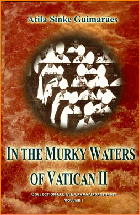 Volume I |
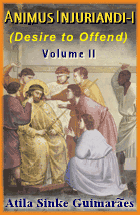 Volume II |
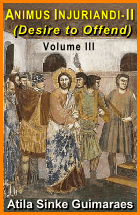 Volume III |
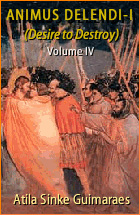 Volume IV |
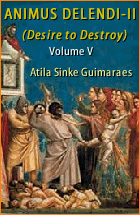 Volume V |
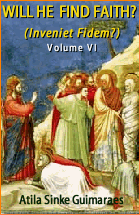 Volume VI |
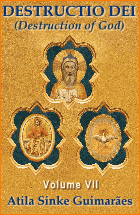 Volume VII |
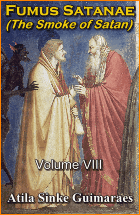 Volume VIII |
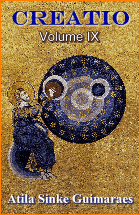 Volume IX |
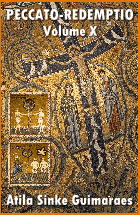 Volume X |
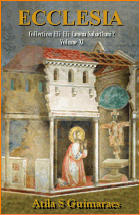 Volume XI |
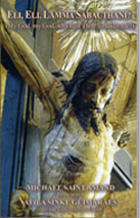 Special Edition |


